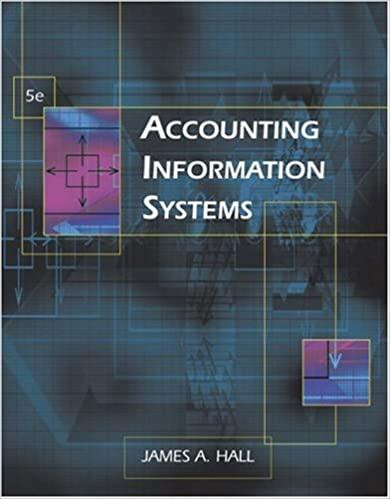Intex Corporation is a multinational company with approximately 100 subsidiaries and divisions, referred to as reporting units.
Question:
Intex Corporation is a multinational company with approximately 100 subsidiaries and divisions, referred to as reporting units. Each reporting unit operates autonomously and maintains its own accounting information system. Each month, the reporting units prepare the basic financial statements and other key financial data on prescribed forms. These statements and related data are either mailed or telexed to corporate headquarters in New York City for entry in to the corporate database. Top and middle management at corpo- rate headquarters use the database to plan and direct corporate operations and objectives. Under the current system, the statements and data are to be received at corporate headquarters by the 12th working day following the end of the month. The reports are logged, batched, and taken to the data processing department for coding and entry into the database. Approximately 15 percent of the reporting units are delinquent in submitting their data, and three to four days are required to receive all of the data. After the data are loaded into the system, data verification programs are run to check footings, cross-statement consistency, and dollar range limits. Any errors in the data are traced and corrected, and reporting units are notified of all errors by form letters. Intex Corporation has decided to upgrade its computer communications network. The new system would allow a more timely receipt of data at corporate headquarters and would provide numerous benefits to each of the reporting units. The systems department at corporate head- quarters is responsible for the overall design and implementation of the new system. It will use current computer communications technology by installing smart computer terminals at all reporting units. These terminals will provide Two-way computer communications and serve as microcomputers that can use spreadsheet and other applications software. As part of the initial use of the system, the data collection for the corporate database would be performed through these terminals. The financial statements and other financial data currently mailed or telexed would be entered by terminals. The required forms would initially be transmitted (downloaded) from the headquarters computer to the terminals of each reporting unit and stored permanently on disk. Data would be entered on the forms appearing on the reporting unit's terminal and stored under a separate file for transmission after the data are checked. The data edit program would also be down- loaded to the reporting units so the data could be verified at the unit location. All corrections would be made before transmitting the data to headquar ters. The data would be stored on disk in proper format to maintain a unit file. Data would either be transmitted to corporate headquarters immediately or retrieved by the computer at corporate head- quarters as needed. Therefore, data arriving at cor- porate headquarters would be free from errors and ready to be used in reports. Charles Edwards, Intex's controller, is very pleased with the prospects of the new system. He believes that the data will be received from the reporting units two to three days faster and that data accuracy will be much improved. However, Edwards is concerned about data security and integrity during the transmission of data between the reporting units and corporate headquarters. He has scheduled a meeting with key personnel from the systems department to discuss these concerns.
Required:
Intex could experience data security and integrity problems when transmitting data between the reporting units and corporate headquarters.
a. Identify and explain the data security and integrity problems that could occur.
b. For each problem identified, describe a control procedure that could be employed to minimize or eliminate the problem. Use the following format to present your answer.

Step by Step Answer:






